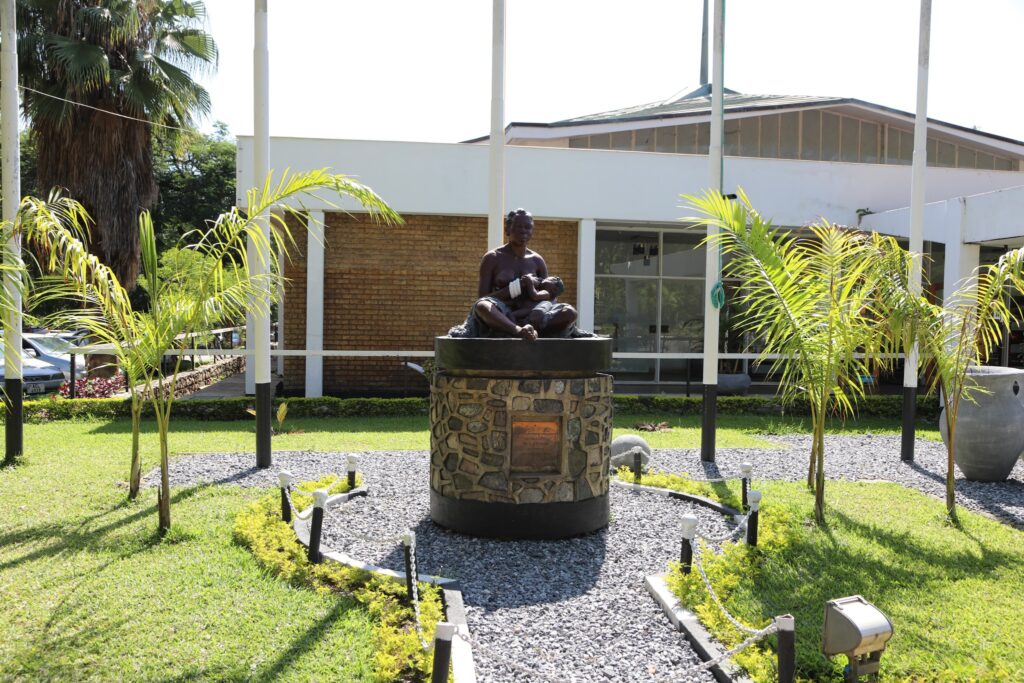Kitwe, Zambia
Learn more about Kitwe's food system below
City overview
The city of Kitwe has a population of 661,907 (CSO, 2022) and is divided into five constituencies and thirty-two wards. The main economic activities are mining and commercial businesses. With an average household size of 4.7, there are approximately 140,830 households. Kitwe is Zambia’s second-largest city, located in the central Copperbelt province, covering 777 sq km, including about 25,700 ha of arable land and 16,000 ha of forest reserves.
Kitwe’s population is predominantly young, with over 66% under 25 years old (Macro Trends, 2023). It is one of the most developed commercial and industrial areas, alongside Ndola and Lusaka. The city’s economic history is closely linked to mining, with the food system historically supporting both rural and urban activities. This connection was especially evident in the 1970s and 1980s before the privatization of mines, which reduced formal employment and increased reliance on the informal economy and agriculture for livelihoods.
Status of food and nutrition security
The food system in Kitwe is closely linked to the mining sector, which has historically supported both rural and urban economic activities. In the 1970s and 1980s, the decline in formal employment due to mine privatisation led to the emergence of an informal economy and agriculture to meet livelihood needs. Kitwe’s food system includes both formal and informal transactions, with many actors providing livelihoods for thousands. However, the long value chains often hinder farmers from realising profits, as they must sell through unregulated agents, impacting food pricing and accessibility.
Farmers mainly practice conventional farming, gradually transitioning to sustainable Conservation Agriculture (FAO, 2018). Key crops include maize, sweet potatoes, and cassava, primarily grown for subsistence. Approximately 70% of fresh produce is sold in open-air markets, with supermarkets accounting for 17%. Access to markets is limited in remote areas, particularly during the rainy season due to poor infrastructure.
Food systems policies and programmes
The city has developed an integrated development plan through extensive consultations with stakeholders, including political leaders, the business community, and technocrats. This plan will contribute to the country’s Eighth National Development Plan, which aligns with Vision 2030, aiming to make Zambia a prosperous nation.
Additionally, Kitwe is part of the Urban Futures Project, which promotes youth involvement in food systems. The city administers empowerment funds through the constituency development fund, supporting projects in domestic animal rearing, crop farming, and food processing. Similar livelihood initiatives are funded by the World Bank under the Zambia Mining Environmental Remediation and Improvement Project.


Challenges
General food and nutritional insecurity
Infant and children malnutrition
Food loss and waste
Climate change and extreme weather events
Poor infrastructure
Strengths
Management of local food markets
Preventing monopolisation: big companies taking over the food system
Food safety & sanitation (including safe water)
Multi-stakeholder governance processes
Addressing corruption and poor governance practices
Successful initiatives
The commencement of a project by Hivos to involve youth in urban food systems, along with the construction of market shelters to enhance trading, food safety, and hygiene.
Ambitions and targets in terms of sustainability of the food system
The city aims to provide modern trading spaces for food traders, formalise informal players in the food system, and promote food processing initiatives.
